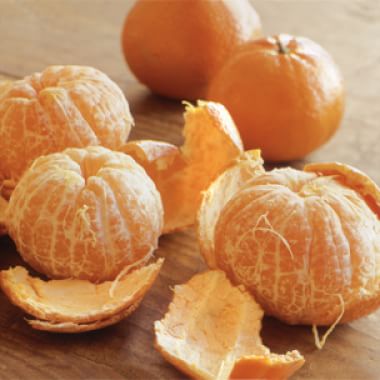
Oranges are in peak season during late winter and early spring. Many varieties of the fruit fall into two broad categories: sweet and bitter. Sweet oranges are best for juicing or eating out of hand, while bitter oranges have a pungent sourness that holds up to sugar; their peels are used to make marmalades, liqueurs and confections. Blood oranges have a distinctive red flesh and juice and a flavor reminiscent of berries; they can be eaten out of hand or used in salads, sauces, desserts and drinks.
Selecting
The juiciest oranges are heavy for their size and have firm, smooth skins free of bruising, mold, deep wrinkles or soft spots. Valencia oranges may sport green-tinged areas, which will not affect their flavor. Better quality navel oranges have smaller, tighter navels.
Storing
Oranges can be stored at room temperature for several days or refrigerated in a plastic bag for up to 3 weeks.
Preparing
Before peeling an orange, squeeze it between your palms or roll it on a countertop, pressing down firmly. This will make the orange a little juicier and easier to peel. To juice an orange, cut the orange in half and use a juicer or reamer to extract the liquid. You may also remove the zest from an orange or segment it before using in a recipe.
Related Recipes:
- Carrot Pineapple Orange Juice →
- Mini Orange-Currant Scones →
- Brûléed Orange French Toast →
- Grand Marnier Soufflé →
- Ricotta with Blood Orange, Pistachio and Honey →
- Shrimp with Orange and Tequila →
- Orange-Braised Ham →
- Edamame and Orange Salad →
- Seared Scallops with Orange and Red Onion Salad →
- Grilled Asparagus and Endive with Favas, Orange and Mint →
- Carrot Soup with Orange and Ginger →








